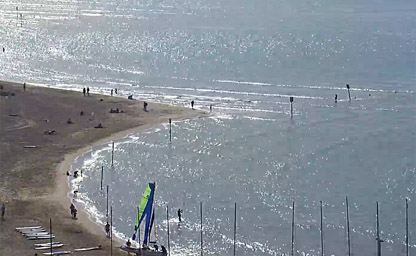
Tel Aviv
It is located near Atarim Square, in the immediate vicinity of Tel Aviv Port and the beach

It is located near Atarim Square, in the immediate vicinity of Tel Aviv Port and the beach
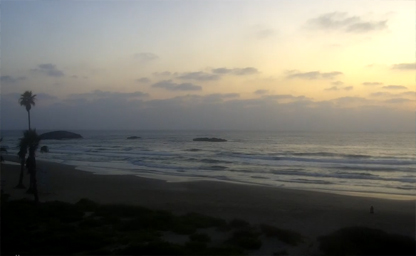
Situated on the Mediterranean Sea coast between Haifa and Hadera
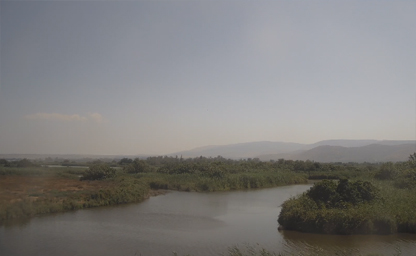
It is a major stopover for birds migrating along the Great Rift Valley between Africa, Europe, and Asia
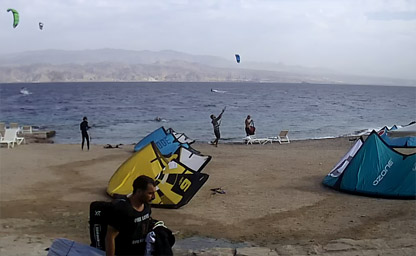
A southern Israeli port and resort town on the Red Sea
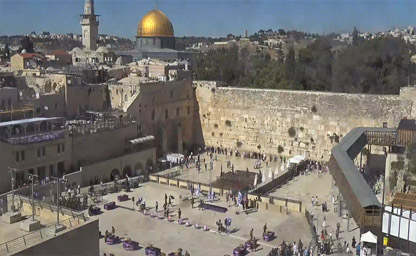
Known in the West as the Wailing Wall
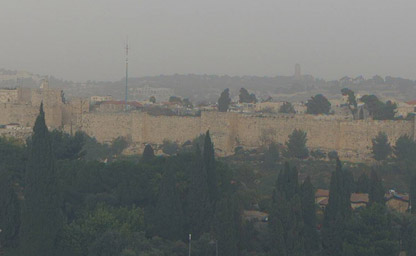
The Inbal Hotel is proud to present a live 360º view camera of lovely city
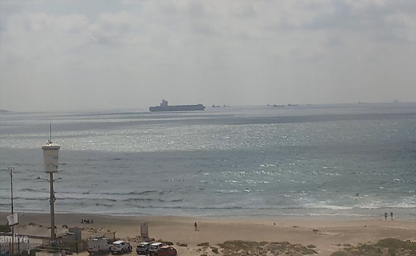
A beautiful Mediterranean destination that stretches from Kiryat Haim to Kiryat Yam
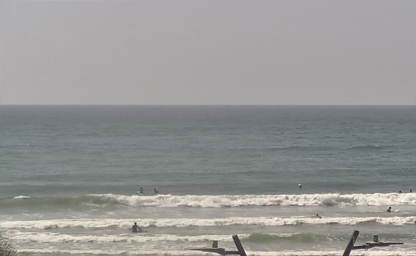
The largest and most innovative marina in the Middle East
Israel, a land steeped in history, culture, and diverse landscapes, offers a captivating journey through the lens of webcams. In this visual exploration, we will traverse the wonders of Israel, experiencing its ancient sites, modern cities, and natural beauty in a unique and immersive way.
Step back in time as webcams transport you to the ancient city of Jerusalem. The Western Wall, a sacred site for millions, comes alive on your screen, with each weathered stone telling a story of centuries past. The live feed captures the essence of this historical city, where traditions and history intertwine.
Venture into the archaeological marvel of Masada, where the webcams provide a front-row seat to the rugged landscapes that surround this fortress. As the sun sets over the Judean Desert, the hues of the sky reflect on the ancient stones, creating a mesmerizing panorama.
Switch gears and explore the modernity of Tel Aviv through the lens of webcams strategically placed across the city. The vibrant beaches, modern architecture, and bustling streets come to life, showcasing the dynamic energy of Israel's cultural and economic hub.
Zoom in on the iconic cityscape from the top of Azrieli Sarona Tower, offering a breathtaking panoramic view. The live feed captures the rhythm of the city, where innovation meets tradition in a harmonious blend.
Israel's diverse geography unfolds before your eyes through webcams showcasing its natural wonders. Take a virtual stroll along the Mediterranean coastline, where the waves gently kiss the sandy beaches. The live feed provides a serene escape, offering a moment of tranquility amid the bustling world.
Experience the stark beauty of the Negev Desert, where webcams reveal the vast expanse of golden sands and unique rock formations. As the sunlight paints the desert landscape, you'll find yourself immersed in the raw, untouched beauty of Israel's southern wilderness.
Engage with the vibrant local culture through webcams capturing the essence of markets like Mahane Yehuda in Jerusalem. Watch as the market comes to life with colors, aromas, and the lively chatter of locals and visitors alike.
Dive into the culinary scene with live feeds from street food stalls in Tel Aviv, where the eclectic flavors of Israeli cuisine tantalize the senses. The webcams provide a glimpse into the gastronomic delights that make Israel a haven for food enthusiasts.
As our virtual journey through Israel concludes, we've glimpsed the tapestry of this remarkable nation through the lens of webcams. From ancient history to modern vibrancy, from natural landscapes to bustling markets, the visual odyssey serves as a testament to Israel's diversity and allure.
So, let the pixels on your screen be the gateway to Israel's wonders. Whether you seek historical immersion, urban exploration, or a tranquil escape into nature, the webcams offer a unique perspective, inviting you to discover the beauty and richness that define this captivating land.
The history of Israel is a tale of ancient civilizations, remarkable religious significance, and a modern national revival. Israel's roots can be traced back to biblical times, with the earliest known inhabitants, the Canaanites, occupying the region around 3000 BCE. The area known today as Israel has seen the rise and fall of many great empires, including the Egyptians, Babylonians, Romans, and Ottomans. However, it is most famous for its religious importance to Judaism, Christianity, and Islam.
In biblical history, the land was promised to the Israelites, descendants of Abraham, according to the Torah. King David established Jerusalem as the capital of the ancient Kingdom of Israel in the 10th century BCE, and his son Solomon built the First Temple, solidifying Jerusalem’s place in Jewish history. After a period of conquest and exile, including the Babylonian destruction of the First Temple and the Roman destruction of the Second Temple in 70 CE, the Jewish people were dispersed in what is known as the Jewish Diaspora.
In the late 19th century, a movement known as Zionism emerged, advocating for the return of Jews to their ancestral homeland. Following the horrors of the Holocaust during World War II, the United Nations approved a plan to partition Palestine into Jewish and Arab states. This led to the establishment of the State of Israel on May 14, 1948. The declaration of independence was followed by immediate conflict with neighboring Arab nations, which continues to influence the geopolitics of the region today.
Since its founding, Israel has fought multiple wars, including the Six-Day War in 1967, during which it captured the West Bank, Gaza Strip, and East Jerusalem—areas still at the heart of the Israeli-Palestinian conflict. Despite the ongoing challenges, Israel has developed into a technological powerhouse, a vibrant democracy, and a place of pilgrimage for millions of religious tourists from around the world.
Israel’s climate is highly varied, thanks to its geographic location at the crossroads of three continents—Asia, Africa, and Europe. It features a Mediterranean climate in most coastal and central areas, while the desert regions of the Negev offer a much drier, more arid environment. Coastal areas such as Tel Aviv and Haifa experience mild, wet winters and hot, dry summers. Rainfall is relatively sparse but concentrated in the winter months, typically between November and March.
In contrast, the inland regions, particularly Jerusalem, experience cooler temperatures year-round due to their higher elevation. This makes Jerusalem a popular destination for those looking to escape the summer heat of the coastal cities. The central and northern parts of Israel can receive occasional snow during the winter months, especially in the higher altitudes like Mount Hermon, which is also a popular ski resort during the colder months.
The Negev Desert, which covers more than half of Israel’s land area, is characterized by extreme temperature fluctuations. During summer, the desert can become unbearably hot, with temperatures soaring above 40°C (104°F). The winters, however, are mild, and the region is known for its dry, sunny weather year-round, making it an ideal destination for those seeking an outdoor adventure in a remote landscape.
Israel's climate supports a variety of landscapes, ranging from fertile plains and verdant valleys to the dry and rugged wilderness of the desert. This unique blend of climate zones makes Israel an excellent location for ecotourism, from hiking in the Negev to exploring the lush greenery of the Galilee.
Israel's geography is diverse and offers an array of landscapes, from the Mediterranean coastline to the rugged mountain ranges, lush valleys, and vast desert. The country is small in size, measuring only about 22,000 square kilometers (8,500 square miles), but it contains a variety of terrains that are remarkable for their contrasts. Israel lies between the Jordan River and the Mediterranean Sea, with borders with Lebanon to the north, Syria to the northeast, Jordan to the east, and Egypt to the southwest.
The Jordan River, which runs along the eastern border of Israel, plays a crucial role in the country's geography and history. The Dead Sea, located along this river, is the lowest point on Earth, sitting more than 400 meters below sea level. Known for its extreme salinity, the Dead Sea attracts visitors for its therapeutic mud and its unique floating experience, as the density of the water makes it nearly impossible to sink.
The country is divided into several distinct regions, each with its unique geographic features. In the north, the Galilee region offers rolling hills, fertile plains, and a mild climate, making it an agricultural heartland. To the south, the Negev Desert stretches across much of the country’s landmass, providing a dramatic, arid backdrop. It is here that you will find the famous Ramon Crater, an impressive geological formation that has become a prime destination for tourists and adventurers alike.
To the west of the country, the coastal plain extends from the city of Haifa in the north to Tel Aviv in the center and further south. This coastal area boasts a mix of sandy beaches, urban development, and significant archaeological sites. The city of Caesarea, for example, features Roman ruins and an ancient harbor, reflecting Israel's rich archaeological history.
In the central region, the Judean Hills are home to Jerusalem, a city that holds religious significance for Jews, Christians, and Muslims. The surrounding mountainous terrain provides dramatic vistas and rich cultural history, with ancient fortresses, monasteries, and pilgrimage sites dotting the landscape.
The country’s geography is also notable for its extensive natural parks and nature reserves, many of which are found in the desert and mountain regions. These areas are ideal for hiking, rock climbing, and exploring unique flora and fauna, including species like the ibex and the Nubian ibex. The diverse geography of Israel is not just a testament to nature’s creativity but also a major draw for those seeking an active outdoor experience while exploring historical landmarks.
Israel’s strategic location, rich history, and varied geography have made it a significant player on the world stage throughout the centuries. The country's landscapes continue to captivate travelers, from its golden beaches and lush valleys to its dry desert expanses and ancient ruins.
Tip: When visiting Israel, don’t miss the chance to float in the Dead Sea. The mineral-rich waters are not only a unique experience, but they are also known for their skin-healing properties!
Interesting Fact: The Dead Sea, one of the saltiest bodies of water on Earth, is so dense that people can float on its surface without any effort, creating a surreal and unforgettable experience for visitors.
The modern State of Israel, established in 1948, has been involved in a series of conflicts that have profoundly shaped its development and the broader Middle Eastern landscape. These conflicts arise from a combination of territorial disputes, national aspirations, ideological divides, security concerns, and shifting international dynamics. The following is a chronological overview of the major conflicts involving Israel from its founding to recent years, summarizing causes, key events, and outcomes without external references.
War of Independence (1948–1949)
Shortly after Israel’s declaration of independence on May 14, 1948, armies from neighboring Arab states (Egypt, Transjordan/Jordan, Syria, Lebanon, and Iraq) entered the territory of the former British Mandate for Palestine. What began as intercommunal violence between Jewish and Arab communities escalated into a full-scale regional war. Israel managed to hold its ground and ultimately expanded its initial territory beyond the UN partition lines. The conflict led to significant population movements, including large numbers of Palestinian Arabs leaving or being displaced, and Jewish communities leaving or displaced from Arab countries. Armistice agreements signed in early 1949 established provisional boundaries often referred to as the “Green Line.”
Suez Crisis (1956)
Tensions mounted over Israel’s security concerns along its southern border, including cross-border raids and restrictions on Israeli shipping through the Straits of Tiran. When Egypt nationalized the Suez Canal in mid-1956, Israel joined Britain and France in a coordinated military operation in October of that year, invading the Sinai Peninsula. Under international diplomatic pressure, particularly from the United States and the Soviet Union, Israel withdrew from Sinai in early 1957 in exchange for guarantees of freedom of navigation and deployment of UN peacekeepers in the Sinai buffer zone.
Six-Day War (1967)
By mid-1967, escalating border skirmishes, troop mobilizations by neighboring Arab states, and the closure of the Straits of Tiran to Israeli shipping led Israel to launch a preemptive strike on June 5. In a brief but decisive campaign, Israel captured the Sinai Peninsula and Gaza Strip from Egypt, the West Bank (including East Jerusalem) from Jordan, and the Golan Heights from Syria. These territorial gains dramatically altered the strategic map and deepened the complexity of future negotiations. The capture of East Jerusalem also brought religious and cultural sites under Israeli control, intensifying the conflict over Jerusalem’s status.
War of Attrition (1967–1970)
Following the Six-Day War, low-intensity hostilities persisted, particularly along the Suez Canal front between Israel and Egypt. This period, often termed the War of Attrition, involved artillery exchanges, commando raids, and aerial engagements. The intent on the Egyptian side was to wear down Israeli forces and pressure them to withdraw from Sinai. The conflict gradually wound down with informal ceasefire understandings by 1970, though a formal peace was still years away.
Yom Kippur War (1973)
In October 1973, on the Jewish holy day of Yom Kippur, Egypt and Syria launched a surprise joint attack on Israeli positions in Sinai and the Golan Heights. Initially caught off guard, Israel eventually mobilized reserves and repelled the offensives, but not without significant casualties and initial territorial setbacks. The war prompted major shifts in regional and global politics, leading to subsequent diplomatic efforts. It underscored both Israel’s military vulnerabilities and the determination of neighboring states to revise the post-1967 status quo.
Peace Treaties with Egypt and Jordan (1979, 1994)
In the aftermath of the 1973 war, U.S.-mediated diplomacy led to the Camp David Accords (1978) and the Israel-Egypt Peace Treaty (1979). Under this treaty, Israel withdrew from the Sinai Peninsula in stages and normalized relations with Egypt, marking the first peace agreement between Israel and an Arab state. Decades later, Israel and Jordan signed their peace treaty in 1994, normalizing relations and addressing water-sharing, security cooperation, and border issues. These agreements reshaped Israel’s strategic environment, though broader regional peace remained elusive.
Lebanon Conflicts
Israel’s involvement in Lebanon evolved over several decades. In 1982, Israel launched a large-scale invasion of southern Lebanon aiming to expel armed groups viewed as threats (notably the PLO). This led to a protracted presence in a security zone in southern Lebanon, periodic clashes with local militias, and involvement in Lebanon’s complex civil war dynamics. Israeli forces withdrew from most of Lebanon in 1985 but maintained positions until a full withdrawal in 2000. In 2006, conflict erupted again between Israel and Hezbollah following attacks across the northern border, resulting in a month-long war with significant damage on both sides and civilian displacement. Sporadic flare-ups continued in subsequent years, reflecting the ongoing tensions on Israel’s northern frontier.
First Intifada (1987–1993)
In late 1987, widespread Palestinian uprisings (Intifada) broke out in the West Bank and Gaza Strip, driven by frustrations over occupation, settlement expansion, and lack of progress toward statehood. The largely grassroots movement involved protests, civil disobedience, and clashes with Israeli security forces. The Intifada shifted international attention to the Palestinian quest for statehood and set the stage for diplomatic efforts, ultimately contributing to the Oslo peace process.
Oslo Process and its Aftermath (1993–2000)
The early 1990s saw secret negotiations culminating in the Oslo Accords (1993–1995), which envisioned a phased approach toward Palestinian self-governance in parts of the West Bank and Gaza and negotiations on final-status issues (Jerusalem, refugees, borders). While Oslo generated hope and a degree of cooperation, core disputes over settlements, security arrangements, the status of Jerusalem, and refugee claims remained unresolved. The process faltered amid mutual mistrust, political changes, and outbreaks of violence.
Second Intifada (2000–2005)
Following failed final-status talks and a provocative visit to a contested religious site, a more violent uprising erupted in late 2000. The Second Intifada featured suicide bombings, armed attacks against Israeli civilians and security forces, and extensive Israeli military operations in Palestinian areas. This period resulted in heavy casualties on both sides, deepened hostilities, and led Israel to erect a separation barrier in parts of the West Bank, citing security needs. The violence gradually subsided by the mid-2000s, but the underlying political impasse persisted.
Withdrawal from Gaza and Gaza Conflicts (2005–present)
In 2005, Israel unilaterally withdrew its settlements and military presence from Gaza. However, after the rise to power of Hamas in Gaza in 2006–2007, relations deteriorated sharply. Israel and Hamas have since engaged in recurrent rounds of hostilities, often involving rocket fire from Gaza into southern Israel and Israeli air, artillery, and ground operations in Gaza. Major flare-ups occurred in 2008–2009, 2012, 2014, 2021, and subsequent years. These conflicts cause widespread destruction, civilian casualties, and humanitarian crises in Gaza, alongside security threats and disruption for Israeli communities near the border.
Ongoing West Bank Tensions
In the West Bank, tensions continue around settlement expansion, restrictions on movement, administrative control, and periodic clashes between Israeli security forces, settlers, and Palestinian residents. Violence includes Israeli raids, Palestinian attacks on civilians or soldiers, and settler-related incidents. Efforts at bilateral negotiations have repeatedly stalled, and unilateral measures (such as settlement approvals or movement restrictions) often provoke international criticism and local unrest.
Regional Realignments and New Dynamics
In recent years, Israel has pursued new regional relationships, including normalization agreements with several Arab states. These diplomatic shifts reflect shared concerns over regional security threats and economic cooperation interests. However, these alignments have not resolved the Israeli-Palestinian conflict, and broader regional tensions related to Iran, proxy conflicts, and internal challenges in neighboring countries continue to influence Israel’s security calculations.
Cyber and Asymmetric Threats
Beyond conventional warfare, Israel faces evolving threats such as cyberattacks, intelligence operations, and asymmetric tactics employed by non-state actors. These include exploitation of advanced technologies by adversaries, requiring Israel to adapt its defense posture across multiple domains (land, air, sea, cyber, and intelligence gathering).
Humanitarian and Societal Impacts
Each conflict has profound humanitarian, social, and psychological effects on populations in Israel and neighboring territories. Repeated cycles of violence shape public opinion, political discourse, security doctrines, and the economy. Civil defense measures, such as early-warning systems and bomb shelters, are integral to daily life in Israeli communities near conflict zones. In Palestinian areas, infrastructure damage, restrictions on movement, and economic hardship exacerbate grievances.
Prospects for Peace and Stability
Despite intermittent efforts at negotiation, fundamental issues remain unresolved: borders, security arrangements, status of Jerusalem, Palestinian statehood, refugees, and mutual recognition. Many actors both within and outside the region continue to advocate varied approaches, from two-state frameworks to alternative visions. Meanwhile, grassroots initiatives, people-to-people programs, and civil society efforts strive to build understanding amid recurrent hostilities. The trajectory of Israel’s conflicts will depend on shifts in regional geopolitics, internal politics on all sides, international engagement, and the capacity of leadership to address core grievances.
Conclusion
Israel’s conflicts since 1948 reflect a complex interplay of historical legacies, security imperatives, national narratives, and regional dynamics. While some neighboring states have made peace, deep-seated disputes with other actors persist. The pattern of hostilities and uneasy truces underscores the challenges of achieving a durable resolution. Understanding this history is essential for any informed discussion about the prospects for long-term stability and peace in the region.